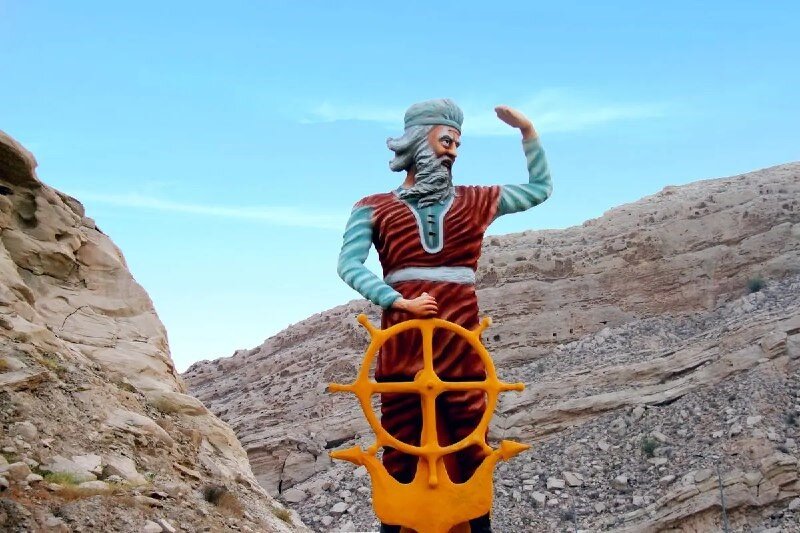Lost history of ‘Sindbad and Sheila’ in ancient Siraf port

TEHRAN — Siraf, a historic port located in Iran’s southern Bushehr province along the Persian Gulf, holds a deep and often overlooked connection to global storytelling.
Decades ago, a Japanese animator drew inspiration from the ancient maritime legacy of Siraf to create the popular animated tales of Sindbad, captivating audiences both in Iran and around the world.
The cartoon character of Sindbad and his ever-companion bird Sheila are completely based on the port of Siraf in Iran. The story has been inspired by the biography of the renowned Iranian sailor Sindbad Bahri. Sheila's name has been derived from the ancient name of the port of Siraf, ILNA wrote.
Sindbad Bahri was one of the 42 Iranian sailors in Siraf port who sailed in seas stretching from Bushehr to China with lenjs and sailboats.
Many Iranians still consider Sindbad an Arabian character because of the Japanese animation, which flourished in Arab countries, and the character of Sindbad was recorded in their minds under their name.
Sulayman was a 9th-century Muslim merchant, traveler, and writer, initially from Siraf in modern-day Iran. He traveled to China and its western part known as Machin before Marco Polo, and his travelogue was called "Akhbar al-Sin wa al-Hind", which he wrote in Arabic, that is currently kept at France’s Louvre Museum and has been translated into six living languages of the world. He was the other Siraf sailor.
Mohammad Kangani, head of the Siraf?Pars Museum Institute NGO, said 17,000 ancient pieces pertaining to Siraf are kept at the London Museum, which may be the richest historical items of West Asia in terms of number.
He said that currently Siraf Museum extends over 2,000 square meters. “We plan to turn it into a smart museum.”
Kangani continued that if Siraf is globally registered, it will be the first to prove the name of the Persian Gulf, which will take the lead from the Arab countries bordering the Persian Gulf, which are trying to change its name by speaking enthusiastically about it in order to persuade other people to support it.
He proposed that a Persian Gulf and Siraf Studies Research Institute be launched near Siraf Museum, so that students could publish theses on the Persian Gulf and Siraf, utilizing its scientific and historical resources.
Siraf, an ancient port on the Persian Gulf, was a major trade hub during the pre-Islamic and early Islamic era, linking Iran to distant regions such as China, India, and East Africa.
Siraf was Iran’s most important port from the Sassanid period to the 4th century AH. It bears plentiful evidence of Persian mastership and genius in seafaring, international relations, and interaction with other near and far cultures and civilizations.
Between 1966 and 1973, the British Institute of Persian Studies conducted seven seasons of excavation and survey at Siraf, which was a major city on the Iranian shore of the Persian Gulf that played a leading role in the network of maritime trade that supplied Western Asia with the products of India, the Far East and Eastern Africa between 800 CE and 1050.
The historical and architectural monuments of Bushehr include Islamic buildings like mosques and praying centers, mansions, old towers, castles, as well as gardens. Moreover, Bushehr embraces significant monuments from the Elamite, Achaemenid, Parthian, and Sassanid eras.
KD
Leave a Comment